Digital
X-RAY & Procedures
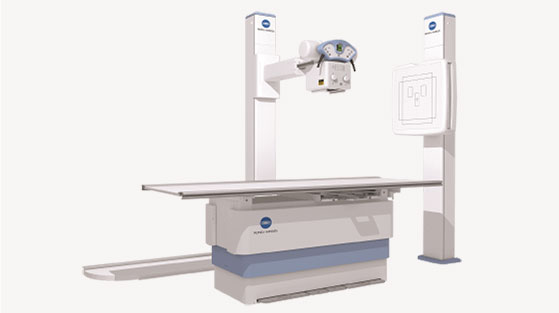
An X-ray is a quick,
painless test that
produces images of the structures inside your
body- particularly your bones, lungs and kidney stones.
What is Digital X-Ray ?
Digital radiography (DR) is an advanced form of x-ray inspection which produces a digital radiographic image instantly on a computer. Digital X-rays produce 80% less radiation than traditional X-rays. For some types of X-ray tests, a contrast medium — such as iodine or barium — is introduced into your body to provide greater detail on the images such as a study of the uterus, genitourinary system, bowel etc. The very low radiation doses are absorbed during the imaging procedures. As a result, there are no side effects of Digital x-ray as such. However, it is best avoided in pregnancy to avoid potential harm to the unborn child.
Digital X-ray films of different parts of the body are obtained. Most commonly these are of the chest, abdomen, kidney-urethra-bladder (KUB), spine and different bones and joints.
One benefit of digital x-ray is that it produces images almost instantly, so there is no need to wait for film to be developed. This means that the results of the exam can be viewed and analyzed more quickly
BARIUM STUDY
They are a series of radiographs of the gastrointestinal track obtained using Barium as the dye or contrast. Barium X-rays (also called upper and lower GI series) are used to diagnose abnormalities of the GI tract, such as tumours, ulcers and other inflammatory conditions, polyps, hernias, and strictures.
There are three types of barium X-ray procedures:
- Barium enema (also called lower GI series)
- Barium small-bowel follows through
- Barium swallow (also called upper GI series)
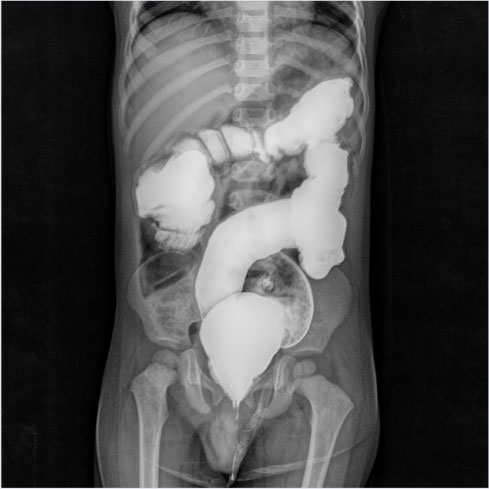
![]()
Click Here To Know More About Preparations & Procedure
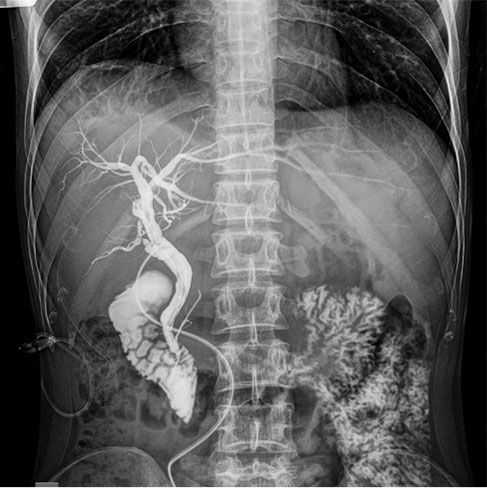
IVP (Intravenous Pyelogram)
An Intravenous Pyelogram (IVP) or Intro Venous Urogram is a special X-Ray examination of Kidneys, Bladder & Ureters.
Procedure
For an intravenous pyelogram, an intravenous line will be put in your arm or hand. A dye ( contrast material ) is injected into a vein. An IVP usually takes less than 1 hour. If your kidneys work more slowly, the test can last up to 4 hours or as required.
![]() Click Here To Know More About Preparations & Prcodedure
Click Here To Know More About Preparations & Prcodedure
FISTULOGRAM / SINOGRAM
Fistulogram is an x-ray procedure used to view a fistula, an abnormal passage between two or more parts of your body that often drains out of your skin. A Sinogram is a similar procedure done to assess a sinus, an abnormal passage or cavity that originates or ends in one opening, often on the skin.
This test is most commonly performed on children under six months of age but is sometimes used to investigate the cause of some urinary symptoms in older children and adults (e.g. repeated infections).
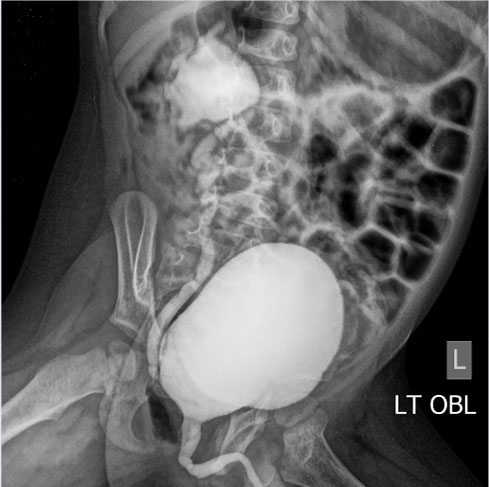
![]() Click Here To Know More About Preparations & Procedure
Click Here To Know More About Preparations & Procedure

RGU (Retrograde Urethrogram)
A Retrograde Urethrogram (RGU) is a diagnostic procedure performed most commonly in male patients to diagnose urethral pathology such as trauma to the urethra or urethral stricture by injecting contrast (Dye) in the urethra.
![]()
Click Here To Know More About Preparations & Prcodedure
DISTAL LOOPOGRAM
This test perform on the patients who underwent the surgical procedure for rectum cancer, sigmoid cancer or any other large intestine related disease.
INDICATIONS :
- To evaluate patency of distal colon before closure of colostomy in adult patients of rectal malignancy.
- To evaluate leakage from anastomotic site in distal colon after surgery.
- To evaluate patency of distal colon and recto-urethral fistula before closure of colostomy in children operated for hirschsprung’s disease or congenital rectal malformations.
- To examine the postsurgical healing of descending colon, sigmoid colon, rectum and anal.
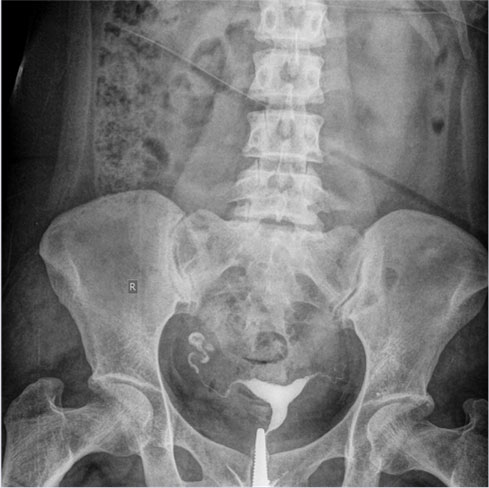
![]() Click Here To Know More About Preparations & Procedure
Click Here To Know More About Preparations & Procedure

X-ray Services Preparations & Procedures
Barium x-ray procedures details
Barium Enema
A barium enema involves filling the large intestine with diluted barium liquid while X-ray images are being taken.
Preparing for Barium Enema test:
Drink clear liquids the day before the examination.
- Follow a special liquid diet one to two days prior to the procedure.
- Take a laxative, suppository, or drug to cleanse the bowel.
- Refrain from eating and drinking after midnight on the night before the examination.
These measures are done to empty the large intestine, as any residue (feces) can obscure the image. However, a barium
A rectal tube will be inserted into the rectum to allow the barium to flow into the intestine.
- After the procedure, a small amount of barium will be expelled from the body immediately. The remainder of the liquid is evacuated along with the stool. Barium liquid may cause constipation and light coloured stools.
- Following the examination, the patient may be asked to eat foods high in fiber and drink plenty of fluids to help expel the barium from the body.
- Preparing for Barium small-bowel follow through
Refrain from eating or drinking after midnight on the night before the examination.
An enema or laxative may be given on the day before the test to clear feces from the bowel.
During the procedure
The patient is given a bottle of barium to drink
- X-rays are taken every 20 to 30 minutes over the next hour or two until the entire small bowel is opacified. This exam can take several hours.
- Following the examination, the patient may be asked to eat foods high in fiber and drink plenty of fluids to expel the barium from the body.
Barium Swallow
Barium swallow and upper GI series are used to identify any abnormalities such as tumors, ulcers, hernias, pouches, strictures, and swallowing difficulties.
Preparing for barium Swallow
Patients may be advised not to eat or drink after midnight on the night before the examination.
On the day of procedure
- The patient will be asked to drink the barium liquid. It is important not to belch, as the gas assists the radiologist in evaluation.
- If the small intestine is to be examined, the patient may be asked to drink additional barium and a series of X-rays will be taken until the barium reaches the colon.
After the procedure
- Following the examination, barium may cause constipation. The patient may be advised to drink plenty of fluids and eat foods high in fiber to expel the barium from the body.
NOTE:
After any of the Barium studies, if you do not have a bowel movement for more than two days after your exam or are unable to pass gas rectally, call your physician promptly. You may need an enema or laxative to assist in eliminating the barium.
IVP preparations details
- The patient may need to be fasting for 8 to 12 hours before the Intravenous Pyelogram.
- Before IVP inform the Technician if you are pregnant or if you have any allergies, especially to iodine.
- If you have diabetes, you should ask your doctor whether you should take insulin on the day of the test or before the day of the procedure.
- The patient also may need to take a laxative the evening before the test & possibly have an enema the morning of the test to make sure the bowels are empty.
- Remove jewellery, eye glasses and any metal objects that may obscure the X-ray images.
Note: Report to the anesthetist in case if you have any problems like rashes, skin redness & skin swelling, sometimes associated with nausea, vomiting, and dizziness after the procedure.
MCUG preparations & after procedure details
Preparation:-
- Your child should be on antibiotics before and after this test to prevent urinary tract infection.
- If your child is older, it may be useful to prepare them by talking about the test and explaining that there is a special table that they are allowed to pee on.
- Inform a Radiologist or Technician if your child has signs of a urinary tract infection (UTI).
After Procedure:-
- A child can usually go home straight away after the test.
- A child will have a 3-day course of antibiotics to prevent urine infection.
RGU preparations details
Preparations:-
- Wear loose and comfortable clothes, as the patient will be asked to expose their genital organ.
- Make sure to empty the bladder before the test (urinate).
- Do not wear any metallic ornament or any accessories during the scan.
- Inform the concerned doctor if the patient is suffering from a Urinary tract infection.
- Inform the doctor if the patient has any implanted metallic instrument in the body such as metal hip bones or joints.
After Test:-
Patient can return to normal activities after this test. Patient may feel little discomfort upto 24 hours & urine may be little pink in colour.
DISTAL LOOPOGRAM preparations & after procedure details
How should I prepare?
Tests required before undergoing this procedure:- Haemoglobin, CBC, HIV, HBsAg
- Schedule your exam for seven to 10 days after the first day of your menstrual period, but before ovulation. This is the best time for the exam.
- Avoid food or beverages intake for 3 hours before the procedure.
- Do not have this procedure if you have an active pelvic infection. Tell the doctor and technologist if you have any signs of pelvic infection or an untreated STD. Tell the doctor if you are allergic to any medication.
- After the procedure an antibiotic is prescribed for 3 days.
- You should inform your physician of any medications being taken and if there are any allergies, especially to iodinated contrast materials. Also inform your doctor about recent illnesses or other medical.
- Women should always tell their doctor and technologist if they are pregnant, as this test cannot be done in pregnancy.
What will I experience during and after the procedure?
- This exam should cause only minor discomfort.
- You may have some slight discomfort and cramping when the doctor places the catheter and injects the contrast material, this should not last long.
- There may also be slight lower abdominal pain or dull ache, this should be minimal and brief.
- Most women experience vaginal spotting for a few days after the exam, this is normal.
